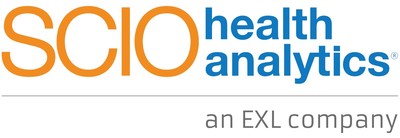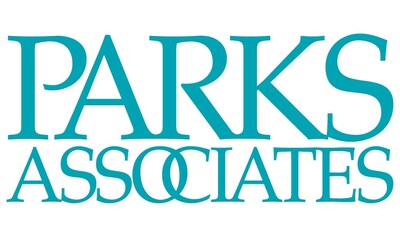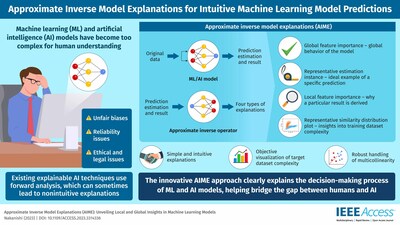Better Use of Data, Demonstrating Value of Pharmaceuticals, Opioid Concerns Lead SCIO Health Analytics’ Predictions in 2018
Press Releases
Dec 20, 2017
WEST HARTFORD, Conn., Dec. 20, 2017 /PRNewswire/ — The focus for healthcare in 2018 will be on fulfilling the promise of current technology advancements rather than breaking new ground, according to experts at SCIO Health Analytics in predictions released today. The company, which offers next-generation analytics that help healthcare payers, providers, and life sciences organizations improve outcomes, lower costs, and drive value, expects that organizations in these markets will look to reap strong returns on technology investments they have already made rather than breaking new ground in 2018.

“Technologies such as artificial intelligence and blockchain are interesting, but they require more development before they can be applied operationally in a meaningful way,” said Rose Higgins, president, North America of SCIO Health Analytics. “In the meantime, there is still much work to be done to realize the full value of the technologies that organizations have already implemented. We expect 2018 to be a year of retrenchment and digging deeper in areas such as advanced data analytics that will set healthcare organizations on a stronger path going forward.”
The company offered predictions in several areas.
More and better use of more data
SCIO predicts that healthcare organizations will expand their use of data beyond traditional clinical, claims, and financial data to harness more demographic, behavioral, and other types of data from disparate sources. Rather than only looking at what happened, healthcare organizations will want to understand how they can influence behaviors of patients, providers, and others more effectively. Two aspects that will be critical to this focus on prescriptive analytics are natural language processing (NLP) and machine learning.
“Improvements in NLP will give healthcare organizations access to a level of data and insights that were previously hidden,” Higgins said. “Machine learning will make it easier to spot the trends and patterns that all of that combined data reveals. The result is organizations will be able to be far more prescriptive in their approach, testing hypotheses and making decisions that can drive real behavioral change, which has always been one of the greatest challenges they’ve faced. The greatest programs in the world only have value if they are followed.”
While the focus of the last few years has been on Big Data, SCIO believes the industry is shifting toward an elevated view of “little data,” i.e., being more precise in the interpretation of data which enables it to be applied on more of an individual basis. According to SCIO, each data set has particular value in utilization, and taking advantage of data layering to enhance the outputs will be critical. These types of analytics are highly valuable in spotting the outliers and trends that are easy to miss in a more macro-focused program. The breadth of data, combined with greater precision, will enable healthcare organizations to gain better insights and guidance on the new programs (and changes to existing programs) that will make them most effective.
SCIO believes healthcare organizations will also seek a greater understanding of social determinants for behavior that must be gleaned from sources outside of healthcare. By using data to learn the “why” behind particular behaviors, healthcare organizations will be positioned to drive better outcomes throughout the system.
To answer these requirements for a broader swath of data, SCIO expects data availability and transparency to be a top priority within the industry.
“Everything in healthcare is interconnected,” Higgins said. “Insights need to be more portable and transparent if they’re going to have the desired effect.”
That said, there are still many barriers, especially with sharing clinical data.
“While organizations throughout the continuum have managed to find workarounds, there is still a need to make it easier and more convenient,” Higgins added. “The longer it takes, the more it will hold back other advancements.”
Of course, with the Equifax data breach and the hacking of the National Security Agency continuing to permeate the news, cybersecurity is certain to be a top priority for all sectors of healthcare. Protected health information has long been demonstrated to have far greater value than credit card or other types of data. As more healthcare organizations move data and analytics to the cloud, they will pay even closer attention in 2018 to all things cybersecurity.
Increased payer/provider/life sciences collaboration
As payers shift more risk to providers and life sciences organizations, collaboration is critical. Despite expected reductions in payments from the Centers for Medicare and Medicaid Services (CMS) for alternative payment models as a result of tax reform, SCIO believes the healthcare industry as a whole is still committed to moving forward with value-based care. In addition, the focus on outcomes will drive life sciences organizations to use analytics to demonstrate the efficacy of their treatments and work more closely with payers to ensure that information reaches prescribers and members.
Analytics will also be used more widely to enable payers to develop detailed profiles of provider performance. They can then use this information to recognize and reward high-performing providers through programs such as “gold carding,” i.e., pre-authorizing providers for more procedures based on their history of delivering quality outcomes. At the same time, the analytics will identify variations in provider behaviors that need to be addressed. By sharing this information in a collaborative atmosphere, payers will help raise the overall standard of care while reducing costs and increasing patient/member satisfaction.
Renewed focus on addressing opioid abuse
The opioid abuse epidemic is a top-of-mind issue for many Americans, including President Trump. Analytics that can help uncover patterns of fraud, waste, and abuse of opioids among providers and patients will be in high demand. The question then will be what to do once they are discovered – especially on the patient side given that programs offering support and treatment for opioid abuse could face serious cutbacks or even elimination.
“The key to reducing opioid abuse in the long-term is by matching patients/members to treatments that have proven effective in others who share similar characteristics and behaviors,” Higgins said. “By monitoring the quality and cost of different treatments, and using analytics to match patients/members to new therapies that may help them deal with their specific circumstances better, we can begin to turn the tide. If we extend this to gain insights on how comorbidities such as mental health disorders affect engagement, behaviors, and costs, we can develop treatment strategies that further drive down risks while improving outcomes.”
Addressing the high cost of pharmaceuticals
This has been another topic of national discussion, and one many believe is critical to reducing the skyrocketing cost of healthcare in America. Roughly $457 billion was spent on prescription drugs in 2015, which represents 16.7 percent of spending overall on personal healthcare services according to HHS’ Office of the Assistant Secretary for Planning and Evaluation (ASPE).
In 2018, SCIO expects that life sciences organizations will be held more accountable for proving the impact their drugs and devices have on improving outcomes for patients and populations, including sharing in the risk around those treatments. As part of this effort, they will need to demonstrate how they can help drive compliance and adherence rather than supplying the products and walking away. This mindset will become even more important for high-cost, high-impact specialty drugs. SCIO believes the industry will begin to test the thesis of outcomes-based contracting between Life Sciences and Health Plans and this will be phased over time from claims data to metrics on the health status of the patient.
Value-based care here to stay
Although there may be some uncertainty around the specifics, particularly in the current political climate, SCIO is confident in predicting that the move to value-based care that is already under way will continue. The ongoing shifting of risk from payers to providers and life sciences organizations is already accelerating. The need to think in terms of populations rather than individuals is given additional urgency by the growth of the Medicare Advantage population, where keeping patients/members healthier in the aggregate is critical to controlling costs.
“That ship has sailed,” says Higgins. “Even if HHS pulls back or delays some of its requirements, commercial payers are still focused on implementing value-based strategies. They recognize the importance of delivering high-quality care while reducing costs, and the need for transparency. They also recognize it’s the right thing to do.”
About SCIO Health Analytics
Based in West Hartford, Connecticut, SCIO Health Analytics is a leading health analytics solution and services company serving healthcare organizations across the continuum including provider groups, health plans, PBMs, health services and global life sciences companies.
SCIO provides predictive analytic solutions and services that transform data into actionable insights, helping healthcare organizations create the understanding that drives change through care, network and reimbursement optimization as well as commercial effectiveness. SCIO’s insights as a service approach supports the shift to value-based care, solving healthcare problems simply and efficiently. Visit SCIO’s website for up to date information on their product and solution offerings: www.sciohealthanalytics.com
|
Media Contact: |
SCIO Contact: |
|
Brandon Glenn |
Michele Norton, M.S., R.N. |
|
Amendola Communications |
Senior Vice President Marketing |
|
(216) 233-4357 |
(727) 815-7710 |
![]() View original content with multimedia:http://www.prnewswire.com/news-releases/better-use-of-data-demonstrating-value-of-pharmaceuticals-opioid-concerns-lead-scio-health-analytics-predictions-in-2018-300573976.html
View original content with multimedia:http://www.prnewswire.com/news-releases/better-use-of-data-demonstrating-value-of-pharmaceuticals-opioid-concerns-lead-scio-health-analytics-predictions-in-2018-300573976.html
SOURCE SCIO Health Analytics



